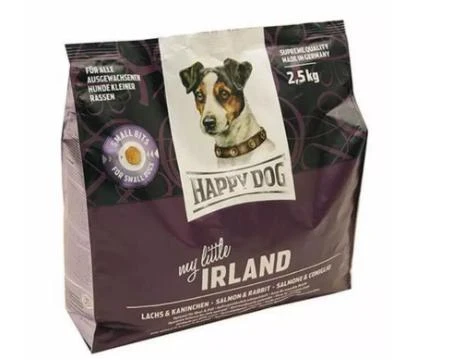Email: enid@bc-pak.com
Tel: 86-757- 88811186
- Afrikaans
- Albanian
- Amharic
- Arabic
- Armenian
- Azerbaijani
- Basque
- Belarusian
- Bengali
- Bosnian
- Bulgarian
- Catalan
- Cebuano
- chinese_simplified
- chinese_traditional
- Corsican
- Croatian
- Czech
- Danish
- Dutch
- English
- Esperanto
- Estonian
- Finnish
- French
- Frisian
- Galician
- Georgian
- German
- Greek
- Gujarati
- haitian_creole
- hausa
- hawaiian
- Hebrew
- Hindi
- Miao
- Hungarian
- Icelandic
- igbo
- Indonesian
- irish
- Italian
- Japanese
- Javanese
- Kannada
- kazakh
- Khmer
- Rwandese
- Korean
- Kurdish
- Kyrgyz
- Lao
- Latin
- Latvian
- Lithuanian
- Luxembourgish
- Macedonian
- Malgashi
- Malay
- Malayalam
- Maltese
- Maori
- Marathi
- Mongolian
- Myanmar
- Nepali
- Norwegian
- Norwegian
- Occitan
- Pashto
- Persian
- Polish
- Portuguese
- Punjabi
- Romanian
- Russian
- Samoan
- scottish-gaelic
- Serbian
- Sesotho
- Shona
- Sindhi
- Sinhala
- Slovak
- Slovenian
- Somali
- Spanish
- Sundanese
- Swahili
- Swedish
- Tagalog
- Tajik
- Tamil
- Tatar
- Telugu
- Thai
- Turkish
- Turkmen
- Ukrainian
- Urdu
- Uighur
- Uzbek
- Vietnamese
- Welsh
- Bantu
- Yiddish
- Yoruba
- Zulu
types of plastic for food packaging
Views :
Update time : feb . 15, 2025 15:03
Choosing the right type of plastic for food packaging is pivotal as it can significantly impact the freshness, safety, and shelf life of food products. With growing environmental concerns and stringent food safety regulations, understanding the different types of plastics used in food packaging becomes critical. Each type of plastic has unique properties that make it suitable for specific food packaging applications.
Polypropylene (PP) is renowned for its high melting point, making it suitable for packaging that needs to withstand heat, such as microwaveable meal trays. This plastic is popular for yogurt containers, straws, and bottle caps due to its rigidity and resistance to moisture, oils, and solvents. Its ability to keep food unharmed under high temperatures without deforming justifies its extensive use in reusable food containers. Polystyrene (PS), often recognized in its expanded form as styrofoam, is used for disposable coffee cups and take-out food containers. It provides excellent insulation, keeping food warm and beverages hot. However, environmental and health concerns regarding its chemical components and poor recyclability are leading to a decline in its usage. Although effective for insulation, many companies are actively seeking alternatives due to consumer demand for more sustainable solutions. Innovative Bioplastics, derived from renewable resources like corn starch or sugarcane, are gaining traction. These materials are biodegradable, reducing the environmental impact. As technological advancements continue to improve their properties, bioplastics offer promising potential to replace traditional plastics in food packaging without compromising on performance or safety. Selecting the right type of plastic for food packaging is more than a technical decision; it's a strategic move that balances performance, compliance with safety regulations, and sustainability. Companies need to stay informed on evolving materials and regulatory changes, ensuring that their packaging not only protects the product and extends its shelf life but also aligns with ecological and health-conscious consumer trends. Each material's unique attributes can be leveraged to enhance the packaging's effectiveness, ensuring food safety and quality while catering to market needs for sustainable solutions.


Polypropylene (PP) is renowned for its high melting point, making it suitable for packaging that needs to withstand heat, such as microwaveable meal trays. This plastic is popular for yogurt containers, straws, and bottle caps due to its rigidity and resistance to moisture, oils, and solvents. Its ability to keep food unharmed under high temperatures without deforming justifies its extensive use in reusable food containers. Polystyrene (PS), often recognized in its expanded form as styrofoam, is used for disposable coffee cups and take-out food containers. It provides excellent insulation, keeping food warm and beverages hot. However, environmental and health concerns regarding its chemical components and poor recyclability are leading to a decline in its usage. Although effective for insulation, many companies are actively seeking alternatives due to consumer demand for more sustainable solutions. Innovative Bioplastics, derived from renewable resources like corn starch or sugarcane, are gaining traction. These materials are biodegradable, reducing the environmental impact. As technological advancements continue to improve their properties, bioplastics offer promising potential to replace traditional plastics in food packaging without compromising on performance or safety. Selecting the right type of plastic for food packaging is more than a technical decision; it's a strategic move that balances performance, compliance with safety regulations, and sustainability. Companies need to stay informed on evolving materials and regulatory changes, ensuring that their packaging not only protects the product and extends its shelf life but also aligns with ecological and health-conscious consumer trends. Each material's unique attributes can be leveraged to enhance the packaging's effectiveness, ensuring food safety and quality while catering to market needs for sustainable solutions.
Recommend products
Read More >>
Related News
Read More >>













